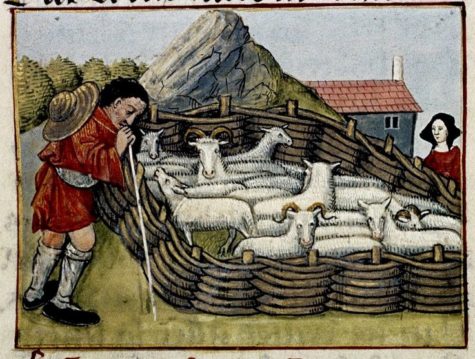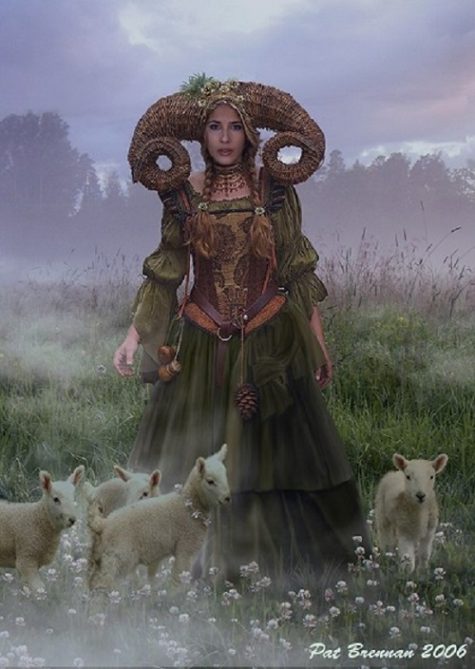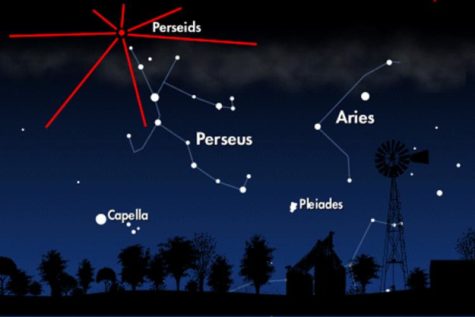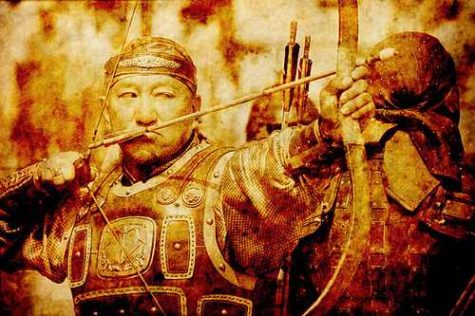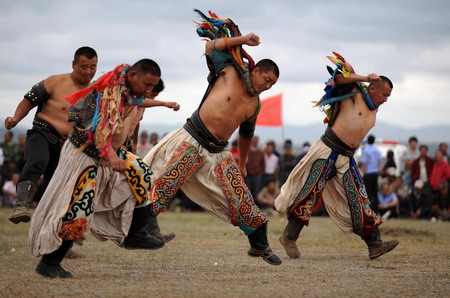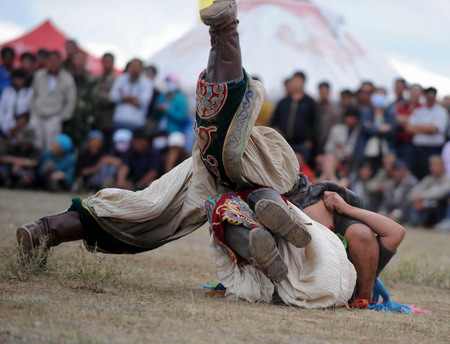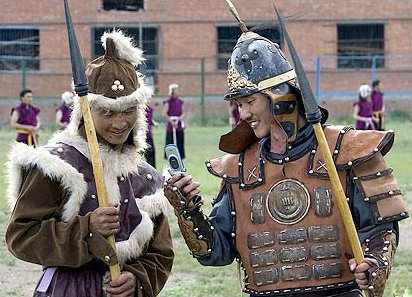July
July 2nd, is the Feast of Expectant Mothers. A festival from ancient Rome, in which pregnant women gathered at temples throughout the city to receive blessings and honor goddesses associated with birth and fertility.
Honor the life force that allows the human species to continue and the women who manifest it. If you know someone who is pregnant, visit her today—take her out to dinner, go shopping, or do something else festive. Otherwise you could donate some of your time and resources to an organization that caters to pregnant women.
Here is a blessing you can say privately or write in a card if you know someone who would appreciate it:
Blessed be the life-bearers
Who bring new souls into the world.
Blessed be the babies
Who are our hope for the future.
Blessed be the mothers and fathers
Who raise them to be good people.
Blessed be the pregnant women
For they are precious beyond price.
Also called The Parilia, this festival is dedicated to the Another festival to Pales, goddess of herds. In ancient Roman religion, Pales was a deity of shepherds, flocks and livestock. Regarded as male by some sources and female by others, Pales can be either singular or plural in Latin, and refers at least once to a pair of deities.
During these festivals, ritualistic cleansing of sheep/cattle pens and animals would take place. There are two dates for this festival, one is April 21, and the other on July 7. The festival in April was for smaller livestock, while the one in July was for larger animals.
The festival, basically a purification rite for herdsmen, beasts, and stalls, was at first celebrated by the early kings of Rome, later by the pontifex maximus, or chief priest.
The Vestal Virgins opened the festival by distributing straw and the ashes and blood of sacrificial animals. Ritual cleaning, anointment, and adornment of herds and stalls followed, together with offerings of simple foods.
Shepherds swept out the pens and smudged the animals and pens with burning sulfur. In the evening, the animals were sprinkled with water, and their pens were decorated with garlands. Fires were started, and in were thrown olives, horse blood, beanstalks without pods, and the ashes from the Fordicalia fires. Men and beasts jumped over the fire three times to purify themselves further, and to bring them protection from anything that might harm them (wolves, sickness, starvation, etc.). After the animals were put back into their pens the shepherds would offer non-blood sacrifices of grain, cake millet, and warm milk to Pales.
Another description of this Festival from Nova Roma is as follows:
The Parilia is both an ancient agricultural festival sacred to Pales and the birthday of Eternal Roma Herself. The sheep-fold is decorated with greenery and a wreath placed on its entrance. At first light the fold is scrubbed and swept, and the sheep themselves are cleansed with sulfur smoke. A fire is made of olive and pine wood, into which laurel branches are thrown; their crackling is a good omen. Offerings are made of cakes of millet, other food, and pails of milk.
A prayer is then said four times to Pales (while facing east), seeking protection and prosperity for the shepherd and his flocks, forgiveness for unintentional transgressions against Pales, and the warding off of wolves and disease. The shepherd then washes his hands with dew. Milk and wine is heated and drunk, and then he leaps through a bonfire (and possibly his flocks as well).
Day of Pales Ritual
From the Pagan Book of Hours, we have a modern day ritual for the Day of Pales.
- Color: Sand-colored
- Element: Earth
- Altar: Upon a sand-colored cloth set a man’s right shoe and a woman’s left shoe, side by side, with a shepherd’s crook between them, and small figures of goats and sheep.
- Offerings: Work in the barn with livestock. Do some chore or work-task that you were taught was inappropriate for your gender.
- Daily Meal: Goat. Lamb or mutton. Coarse bread. Soup or stew. Greens.
Invocation to Pales
Hail, Keeper of Flocks and Herds,
Ass-headed god/dess, you who are
Both male and female,
Both god and peasant,
Patron of those who must dirty their hands,
Beloved of the working man and woman,
You who do not play favorites,
Trickster who loves a good joke,
Lord of the dry land between the rivers
Where your flocks graze on scrub
And the people’s blood flows like water
In their everlasting feud,
Come to us and show us life
Through your crooked ass eyes!
Hail, Keeper of Flocks and Herds,
Lady/Lord of the crook and sandals,
You show us that roles
Are meant to be transgressed,
That work can be radical,
That being bound to the labor of the Earth
Does not have to make one heavy.
We need your humor, divine ass!
We need your braying laughter to echo
Over the desert and through our hearts,
And to watch you tip the balance of power
Like a child tips an apple cart.
Hail, Keeper of Flocks and Herds!
(After the invocation, go to the barn, or to a local farm. Hoofed livestock should be given treats on this day, in honor of Pales.)
According to the old roman calendar July 18 is a “dies ater” or black day, meaning a day of ill omen, or Day of Bad Omens. It marks the defeat of the Romans by the Gauls in the Battle Allia in 390 BC which in turn lead to the sack of Rome by the Gauls.
October 6 is also a “dies ater” or black day as it marks the anniversary of the battle of Arausio (105 BC).
Not much is said about the dos and don’ts or any rituals associated with either day, So, I thought it would be appropriate to post this excerpt from a little book called Signs Omens and Portents in Nebraska Folklore, published in 1933:
Signs of evil portent are among the most common of surviving folk beliefs in Nebraska. In number and currency they rival the popular omens concerned with weather and marriage and they are regarded with perhaps a greater degree of seriousness than signs of the latter type. Such a mass of superstitions having to do with death and bad luck hints at underlying pessimism in human beings. It suggests a preoccupation with the idea of death and a constant dread of inevitable calamity.
Possibly thoughts of melancholy are not so pervasive as the signs might lead us to believe, and it is reassuring to note that open credulity has almost disappeared. The mere survival of the signs, however, is a poignant reminder of a fear-ridden past, and such modern taboos as those against counting cars in a freight train and turning in a funeral car are evidence that superstitions are still in the making.
There is much confusion in the signs. Those which are regarded as bad luck omens by many people have become portents of death to others. The shift may be the result of a natural tendency to make omens specific rather than to leave them merely general indications of good or ill fortune.
Many of the signs seem to be based on a rather obvious association of ideas. Funerals bring to mind the common fate of man. Almost any incident connected with a burial may be looked upon as a sign of another death or an impending disaster. The hooting of an owl has an ominous sound. It causes a shudder, inspires fear, and becomes linked with thoughts of future afflictions. Although the howling dog may not as in legend see the goddess of death, he wakens with his mournful falsetto thoughts of gloom, and quite naturally may become to the superstitious a messenger of approaching distress.
Other signs indicate the connection between ignorance and fear, the tendency to look with dread upon the unknown, and to find in the unusual cause for anxiety. The most commonplace occurrence may become a menace, if it takes place at an unexpected time. When standards of appropriateness are violated, when the incongruous is noted, suspicion and fear are aroused.
In such signs the psychological basis seems obvious enough. In others the roots of belief are more difficult to suggest. Possibly the Romans are responsible for many omens associated with birds; the belief in the ill luck attendant upon salt-spilling may come from the Jewish and pagan use of salt in sacrificial rites, and the fear inspired by breaking a mirror may be traced to the use of mirrors by magicians in sorcery. But the origin of many of the symbols seems lost to us entirely. Like the events they predict, they are obscure, and they are perhaps more interesting because of the element of mystery which surrounds them.
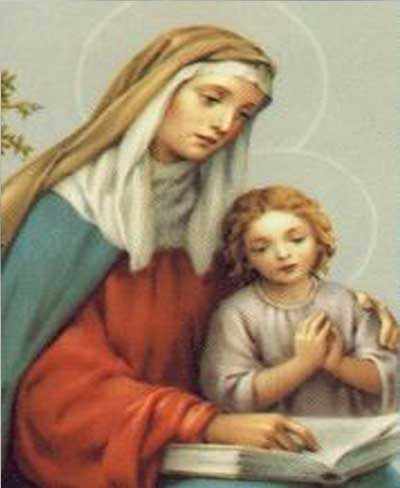 July 26, is the Feast of St. Anne, Mother of Mary and grandmother of Jesus.
July 26, is the Feast of St. Anne, Mother of Mary and grandmother of Jesus.
Shellfish and lobster are served in France for their Saint Anne’s Day, July 26th. The most celebrated sight of St. Anne feast day is the annual ten day Saint Ann’s Solemn Novena made at Saint Ann’s Monastery Church at the Shrine of St. Ann de Beaupre in Quebec, Canada. The ten day novena begins on July 16 ends on July 26th, the feast of St Ann.
Patron Anne intervenes against poverty and for cabinetmakers; carpenters; childless couples; equestrians; grandmothers; grandparents; homemakers; housewives; miners; mothers; pregnancy; pregnant women; and women in labor.
If you fall into the above categories, this might be a good day to say some prayers to Saint Anne. The series of prayers for the novena can be found here.
Related Links:
- Saint Anne (general information)
- Prayer to Saint Anne
- Invoking Saint Anne
July 29, is the festival of the Anglo-Saxon god Thunor and the Norse god Thor, a time of ascendant power and order. The great thunder-God Thor was honored on this date with prayers for protection of the crops against destructive storms in the older times in Europe.
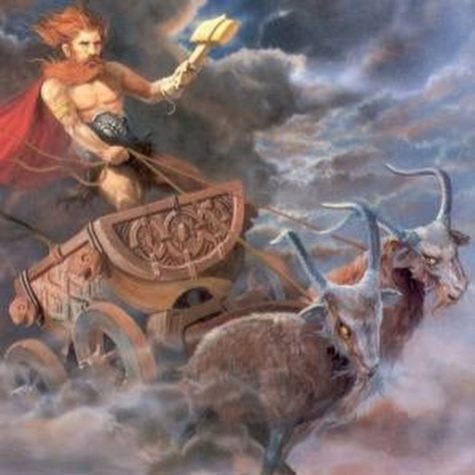
Prayer to Thor for Strength
by Seawalker
Thunder rolls, lightning strikes,
And the hammer flies across the sky.
God of the weather, chariot of the storm,
Master of rain and torrents,
Son of the strength of Mother Earth,
I ask you to grant me that strength for myself.
You who are so great that you cannot walk
Across the Rainbow Bridge without breaking it,
You whose tree is the mighty oak,
O Thunor, grant me that unending sturdiness.
Let me not break beneath the blows of misfortune.
Keep me from being crushed when the powerful
Stomp their large feet on the smaller ones below.
You who are the guardian of the common man,
You who care for the farmers and workers,
Look upon me here in this place where I am
Only one of many, and protect my steps.
Make me resilient and mighty as your own arm,
Make me unbreakable, you who are Friend of Man.
I ask for one small percentage of the vigor
Of the right arm of the Thunderer,
That I might brave the tempest
And stand firm in the gales.
Thunder rolls, lightning strikes,
And the hammer flies across the sky.
Found at Thor’s Shrine
On July 25, in ancient Rome, the annual Furinalia (also spelled Furrinalia) took place in honor of the Goddess of springs, Furrina. This was the time when a drought might begin to “bite,” and the value of springs is appreciated. This is a good day to remember our vital reliance on sources of water and how important it is that they be kept clean and free of pollutants and contaminants.
Get set for the meteoritic grand finale of summer. The middle week of August is the peak of the Perseid meteor shower.
The Perseids is one of the best meteor showers to observe, producing up to 60 meteors per hour at its peak. It is produced by comet Swift-Tuttle, which was discovered in 1862. The Perseids are famous for producing a large number of bright meteors. The shower runs annually from July 17 to August 24. Best viewing will be from a dark location after midnight. Meteors will radiate from the constellation Perseus, but can appear anywhere in the sky.
It peaks this year (2017) on the night of August 12 and the morning of August 13. The waning gibbous moon will block out many of the fainter meteors this year, but the Perseids are so bright and numerous that it should still be a good show.
Of course, like with any meteor shower, it’s worth starting to watch a few days prior to the peak date. Although meteor streams like the Perseids have been modeled and mapped over the years, there are still lots of surprises out there. Plus, starting an early vigil is insurance that you at least catch some action in the event that you’re clouded out on game day! The Perseids are already active, spanning a season from July 17th to August 24th.
Here’s a sky map:
Source: SeaSky and other sources
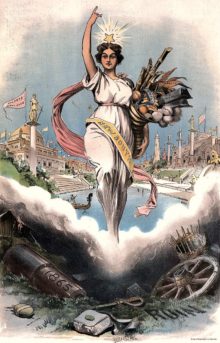 Commemorates the storming of the Bastille, which started the French Revolution, on July 14th, 1789. Bastille Day is also celebrated by many of France’s former and current colonies.
Commemorates the storming of the Bastille, which started the French Revolution, on July 14th, 1789. Bastille Day is also celebrated by many of France’s former and current colonies.
For A Magickal Bastille Day
- Theme: It’s time for a revolution!
- Colors: Blue, white, and red
- Symbols: The Eiffel Tower and the French national flag
- Presiding Goddess: Lady Liberty
About Lady Liberty:
Although, Lady Liberty is not a goddess in the true sense of the word, she is a potent symbol of freedom. The statue of Liberty was a gift to the United States from the people of France. The statue is of a robed female figure representing Libertas, the Roman goddess of freedom, who bears a torch and a tabula ansata (a tablet evoking the law) upon which is inscribed the date of the American Declaration of Independence, July 4, 1776. A broken chain lies at her feet. The statue is an icon of freedom. In 1793, during the French Revolution, the Notre Dame de Paris cathedral was turned into a “Cult of Reason” and for a time “Lady Liberty” replaced the Virgin Mary on several altars.
To do today:
Time to take stock of your life and circumstances. Is it time for a revolution in your life? Is it time to break down barriers, make new rules, give yourself permission to be free of oppressive situations and/or relationships? Is it time to draw up your own Declaration of Independence, or as the French termed it, the Declaration of the Rights of Man and of the Citizen?
Here is a spell for personal freedom:
This spell taps directly into the energy and power of Bastille Day, and can be performed any time it is needed. You will need a length of blue, white, and red ribbon or yarn. It should be as long as you are tall. You can use three ribbons, each a solid color, or one ribbon that is a combination of the three colors. You will also need an envelope, and a handful of dandelion fluff, or feathers, a small candle, and a knife or pair of scissors.
Light the candle, and then place the dandelion fluff into the envelope, and seal it shut. Those little bits of fluff or feathers represent your spirit. The envelope represents the walls you have created to protect yourself. Carefully fold or roll the envelope up so that will fit comfortably in your hand. You control your own destiny. It lies in your hands now.
Sit down, holding the envelope, and think about what restricts your freedom, what circumstances and situations starve your spirit, and steal your joy, what binds you, what constricts you, what holds you back. Begin to tie the ribbon around the envelope. There is no wrong way to bind up the envelope with the ribbon. Tie as many knots as you’d like. While you are binding the envelope, be thinking about the restrictions that bind your spirit. When you are complete, drip candle wax onto the bundle to seal it, and then snuff the candle.
Now, take the wrapped up envelope outside, along with the knife or scissors outside. Take a few moments to breathe in the outside air, listen to the sounds around you, notice the wind and the sky. You can be free. You can claim your freedom. Allow yourself to think about how it will feel to be free. When you are ready, begin to cut the strands of ribbon away from the envelope. As you do, say the following:
Bondage has no hold on me.
Beautiful Lady set me free.
When the ribbon is completely cut, very gently open the envelope and take out the dandelion fluff or feathers. Holding them in your hand, gently breathe into them and then hold them high and toss them free. Don’t worry if they simply fall to the ground. Any feathers or fluff that fails to fly free can be picked up and gently placed in an open spot where they will catch the breeze.
Burn or bury the remains of the envelope and the ribbon. When you go back inside, re-light your candle. You are now ready to let your own light shine. Allow the candle to burn completely.
About Bastille Day:
What follows is an excerpt from a Paris newspaper account of the fall of the Bastille, on July 14, 1789:.
It was a terrible scene. . . . The fighting grew steadily more intense; the citizens had become hardened to the fire; from all directions they clambered onto the roofs or broke into the rooms; as soon as an enemy appeared among the turrets on the tower, he was fixed in the sights of a hundred guns and mown down in an instant;
meanwhile cannon fire was hurriedly directed against the second drawbridge, which it pierced, breaking the chains; in vain did the cannon on the tower reply, for most people were sheltered from it; the fury was at its height; people bravely faced death and every danger; women, in their eagerness, helped us to the utmost; even the children, after the discharge of fire from the fortress, ran her and there picking up the bullets and shot;
…and so the Bastille fell and the governor, De Launey, was captured … Serene and blessed liberty, for the first time, has at last been introduced into this abode of horrors, this frightful refuge of monstrous despotism and its crimes.
Interestingly, although the name of the Bastille evokes dark images of despotism and unjust imprisonment, in reality it was a great deal pleasanter than most ordinary prisons. A central part of the myth, and an indication of its potency, was the story of a prisoner supposedly forced to wear an iron mask to conceal his identity even from his guards – the sufferings of this Man in the Iron Mask were given wide publicity by Voltaire. Archives of the title reveal that there was indeed a masked prisoner from 1698 until 1703, when he died. The mask was made of velvet, and he was well treated.
It was originally built in the 14th century to guard one of main entrances to Paris, but by the 18th century the Bastille served only as a prison – mainly for political, aristocratic prisoners who could not be thrust into the crowded gaols with common criminals – and occasionally as a store for arms.The fortress also accommodated printers, booksellers and authors who produced works that the authorities considered seditious. Voltaire was imprisoned there twice: first in 1717 when he was suspected of writing verses accusing the Régent of incest, and then again in 1726. Throughout the 18th century there were never more than 40 inmates, most of them serving short sentences.
On the morning of 14 July 1789, the Bastille was nearly empty of prisoners, housing only seven old men annoyed by all the disturbance: four forgers, two “lunatics” and one “deviant” aristocrat, the Comte de Solages (the Marquis de Sade had been transferred out ten days earlier). The cost of maintaining a medieval fortress and garrison for so limited a purpose had led to a decision being taken to close it, shortly before the disturbances began. It was, however, a symbol of royal tyranny.
Upon learning that the Bastille had been taken, King Louis XVI, who was residing at Versailles, was reported to have asked an informer: “Is this a revolt?” and La Rochefoucauld-Liancourt said, “No, Sire, it is a revolution.” Little did Louis know that the mob’s next plan was to march to Versailles, and take him away with them as well.
Note: This post was put together by Shirley Twofeathers you may repost and share it only if you give me credit and a link back to this website. Blessed be.
The Delta Aquarids is an average meteor shower that can produce up to 20 meteors per hour at its peak. It is produced by debris left behind by comets Marsden and Kracht. The shower runs annually from July 12 to August 23. Best viewing will be from a dark location after midnight. Meteors will radiate from the constellation Aquarius, but can appear anywhere in the sky.
Source: SeaSky
Naadam is the most widely watched festival among Mongols, and is believed to have existed for centuries in one fashion or another. Naadam has its origin in the activities, such as military parades and sporting competitions such as archery, horse riding and wrestling, that followed the celebration of various occasions. Now it formally commemorates the 1921 revolution when Mongolia declared itself a free country.
The biggest festival is held in the Mongolian capital Ulaanbaatar during the National Holiday from July 11 – 13, in the National Sports Stadium. Other cities and towns across Mongolia and those with significant Mongolian populations in China, have their own, smaller scale Naadam celebrations. It begins with an elaborate introduction ceremony featuring dancers, athletes, horse riders, and musicians. After the ceremony, the competitions begin.
Another popular Naadam activity is the playing of games using shagai, sheep anklebones that serve as game pieces and tokens of both divination and friendship. In the larger Nadaam festivals, tournaments may take place in a separate venue.
Source: Wikipedia

